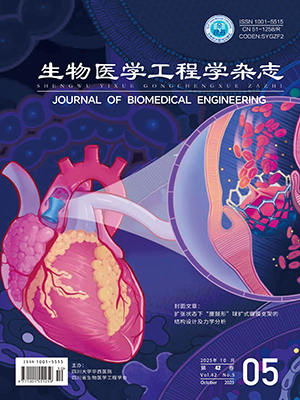| 1. |
Athal K K, Willinger L, Manning W, et al. A constrained-condylar fixed-bearing total knee arthroplasty is stabilised by the medial soft tissues. Knee Surg Sports Traumatol Arthrosc, 2021, 29(2): 659-667.
|
| 2. |
Villa J M, Mashni S J, Bains S S, et al. The fate of highly porous titanium tibial cones in revision totalknee arthroplasty: a multicenter 5-year minimum follow-up study. J Arthroplasty, 2025: S0883.
|
| 3. |
梁浩东, 潘建科, 谢辉, 等. 全膝关节置换过程中骨缺损的处理策略. 中国组织工程研究, 2018, 22(15): 2414-2420.
|
| 4. |
束志勇, 查振刚, 李劼若, 等. 全膝关节翻修术中骨缺损的治疗进展. 中国矫形外科杂志, 2008, 16(24): 1879-1882.
|
| 5. |
Zhang J, Liu Y, Han Q, et al. Biomechanical comparison between porous Ti6Al4V block and tumor prosthesis UHMWPE block for the treatment of distal femur bone defects. Front Bioeng Biotechnol, 2022, 10: 939371.
|
| 6. |
Shafagih R, Rodriguez O, Schemitsch E H, et al. A review of materials for managing bone loss in revision total knee arthroplasty. Mater Sci Eng C, 2019, 104: 109941.
|
| 7. |
Innocenti B, Fekete G, Pianigiani S. Biomechanical analysis of augments in revision total knee arthroplasty. J Biomech Eng, 2018, 140(11): 111006.
|
| 8. |
Liu Y, Chen B, Wang C, et al. Design of porous metal block augmentation to treat tibial bone defects in total knee arthroplasty based on topology optimization. Front Bioeng Biotechnol, 2021, 9: 765438.
|
| 9. |
Rahimizadeh A, Nourmohammadi Z, Arabnejad D S, et al. Porous architected biomaterial for a tibial-knee implant with minimum bone resorption and bone-implant interface micromotion. J Mech Behav Biomed Mater, 2018, 78: 465-479.
|
| 10. |
Yoon J R, Cheong J Y, Im J T, et al. Rotating hinge knee versus constrained condylar knee in revision total knee arthroplasty: a meta-analysis. PLoS ONE, 2019, 14(3): e0214279.
|
| 11. |
Sopher R S, Amis A A, Calder J D, et al. Total ankle replacement design and positioning affect implant-bone micromotion and bone strains. Med Eng Phys, 2017, 42: 80-90.
|
| 12. |
Annur D, Kartika I, Sudiro T, et al. Microstructure, mechanical properties, and in vitro studies of porous titanium obtained by spark plasma sintering. Trans Indian Inst Met, 2022, 75(12): 3067-3076.
|
| 13. |
Liang D, Zhong C, Jiang F, et al. Fabrication of porous tantalum with low elastic modulus and tunable pore size for bone repair. ACS Biomaterials Science & Engineering, 2023, 9(3): 1720-1728.
|
| 14. |
赵志庆, 王冀川, 燕太强, 等. 3D打印踝关节融合假体重建胫骨远端肿瘤切除后骨缺损的有限元分析. 中国骨与关节杂志, 2023, 12(12): 883-888.
|
| 15. |
陈彦飞, 鲁超, 赵勇, 等. 基于CT影像动态膝关节有限元模型的构建及仿真力学分析. 中国骨伤, 2020, 33(5): 479-484.
|
| 16. |
胡海波, 刘会群, 王杰恩, 等. 生物医用多孔钛及钛合金的研究进展. 材料导报, 2012, 26(1): 262-266,270.
|
| 17. |
Godest A C, Beaugonin M, Haug E, et al. Simulation of a knee joint replacement during a gait cycle using explicit finite element analysis. J Biomech, 2002, 35(2): 267-275.
|
| 18. |
Kelly N, Cawley D T, Shannon F J, et al. An investigation of the inelastic behaviour of trabecular bone during the press-fit implantation of a tibial component in total knee arthroplasty. Med Eng Phys, 2013, 35(11): 1599-1606.
|
| 19. |
International Organization for Standardization. ISO 14243-3: 2014 Implants for surgery-Wear of total knee-joint prostheses-Part 3: Loading and displacement parameters for wear-testing machines with displacement control and corresponding environmental conditions for test. Geneva: International Organization for Standardization, 2014.
|
| 20. |
Greenberg A, Cohen D, Shahabinezhad A, et al. Good short-term survivorship of constrained condylar revision knee implants with medial pivot kinematics: a level IV retrospective study. J Arthroplasty, 2024, 39(8 S1): S275-S279.
|
| 21. |
Wang X, Malik A, Bartel D L, et al. Load sharing among collateral ligaments, articular surfaces, and the tibial post in constrained condylar knee arthroplasty. J Biomech Eng, 2016, 138(8): 081002.
|
| 22. |
Chen Z, Han J, Zhang J, et al. Tibial post loading increases the risk of aseptic loosening of posterior-stabilized tibial prosthesis. Proc Inst Mech Eng H, 2024, 238(8-9): 886-896.
|
| 23. |
赵光辉, 马建兵, 王建朋. 初次全膝关节置换术中使用短延长杆的生物力学研究. 中华骨与关节外科杂志, 2023, 16(8): 713-720.
|
| 24. |
Totoribe K, Chosa E, Yamako G, et al. Finite element analysis of the tibial bone graft in cementless total knee arthroplasty. J Orthop Surg Res, 2018, 13(1): 113.
|
| 25. |
Cameron H U, Pilliar R M, Macnab I. The effect of movement on the bonding of porous metal to bone. J Biomed Mater Res, 1973, 7(4): 301-311.
|
| 26. |
Engh C A, O'connor D, Jasty M, et al. Quantification of implant micromotion, strain shielding, and bone resorption with porous-coated anatomic medullary locking femoral prostheses. Clin Orthop Relat Res, 1992, 285: 13-29.
|
| 27. |
El-zayat B F, Heyse T J, Fanciullacci N, et al. Fixation techniques and stem dimensions in hinged total knee arthroplasty: a finite element study. Arch Orthop Trauma Surg, 2016, 136(12): 1741-1752.
|
| 28. |
Barrack R L, Stanley T, Burt M, et al. The effect of stem design on end-of-stem pain in revision total knee arthroplasty. J Arthroplasty, 2004, 19(7 Suppl 2): 119-124.
|




